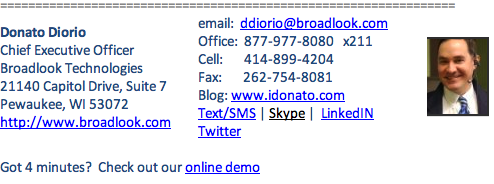What do data mining and Doctor Who have in common? Start with data mining. Some companies sell different versions of a database or subscription service, based on your location. They determine your location based on your computer's IP address. For example, if...
Deep Dive into hidden and protected pages – new sourcing technique “cache windowing”
I've tried this and it works every time. How long it will work, who knows. If you google a specific page and then search the page again... but this time using the last few words from the excerpt of the page results... you can use this technique to actually scroll...
What you know about Internet Resume searching is wrong
Do you use search engines to look for resumes on the Internet? Do you use exclusions such as "-jobs" or "-submit"? If you do. Stop it. Read on and I'll tell you why. First a story about Easter hams. To understand what I am going to say about searching for resumes,...
The future death of social networking
Social networking is going to die. This article is about how it will happen. The focus for this article will be business social networking. If you are worried about your Facebook friends and photos and the life sucking that goes on in personal social networks, don't...
The 8th law of Internet Search; The Law of Environment
Steven Covey published The Seven Habits of Highly Successful People and it was a great book. When Dr. Covey came out with a new book, The 8th Habit, I was skeptical. Why didn't he think up the 8th habit right from the start? Now I understand it. Ideas evolve. We...
Finding the right place for semantic search
Semantic search is a fantastic technology, if used correctly. I am not talking about users of semantic search technology, I am talking about the technology vendors that make it part of a system I was inspired to write this blog after reading Glen Cathey's (The...
Don’t search the Internet like a database
Having worked with many databases as well as having extensive experience in searching the Internet, I thought I'd share some thoughts on the differences between the two. When I observe people searching the Internet, there is a common mistake I see them making. Most...
One reason for CRM failure; The Nature of Contact Information
Most CRM implementations fail. This is a fact. Look it up. In my years in the industry, I've worked with many vendors on the consulting side to help reduce the possibility of CRM failure. While there is a whole host of reason that failure occurs, I have a very...

11 rules to sell to me
In 2002, I was excited to get phone calls or even emails from anyone. My company was a start-up. 2 guys in a office with a dog and a bunch of computer servers. Today it is different. Perhaps I am partly to blame. My contact information is on the Broadlook website,...
What is boolean? Is “Boolean Black belt” a good thing? What is Beyond Boolean?
There has been a recent rise of the term "Boolean blackbelt", while I am not familiar, specifically, with all the people stating to be a a boolean black belt, I wanted to add some perspective. "Boolean Blackbelt", may be a great marketing phrase, but it is the...